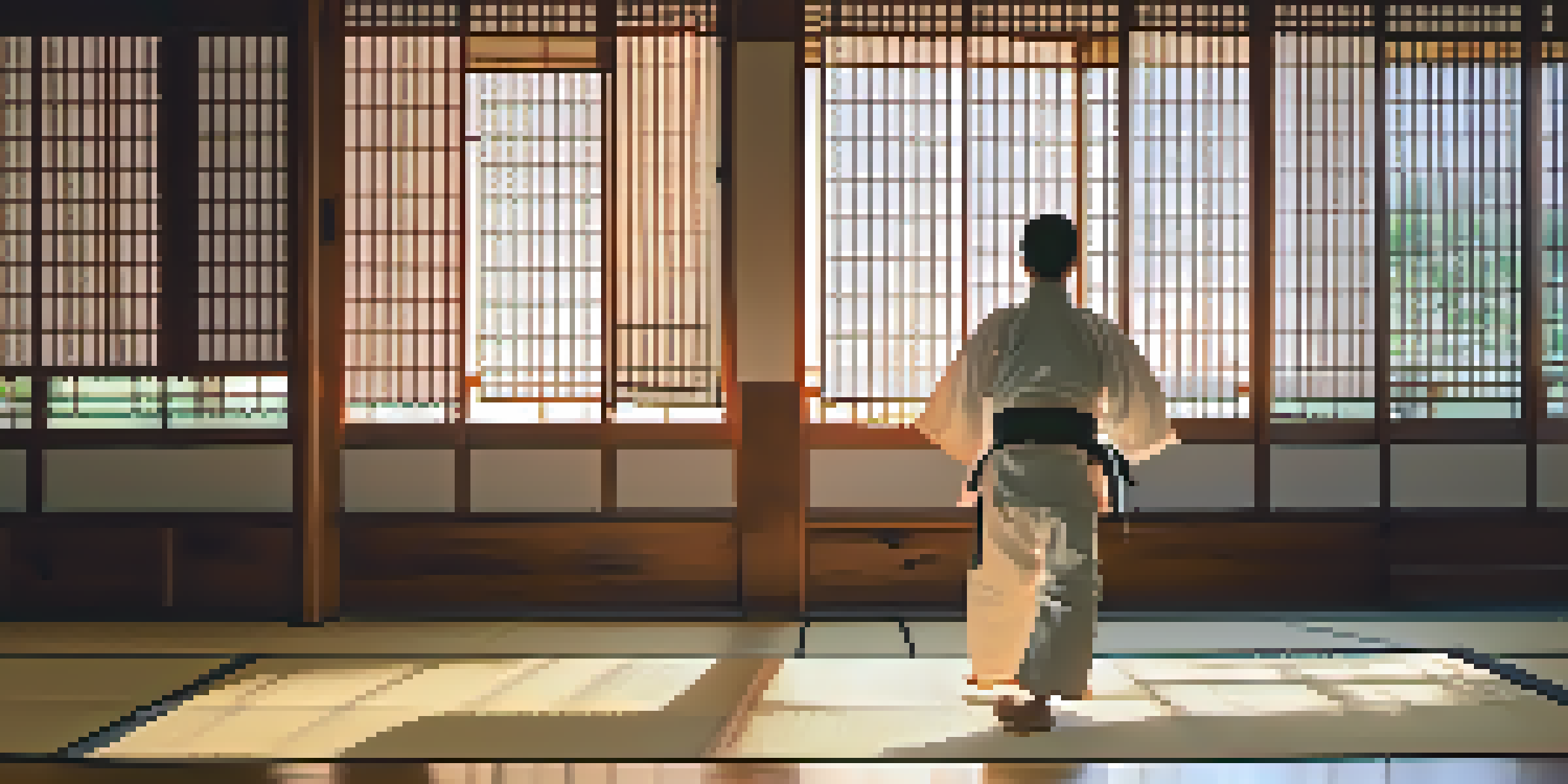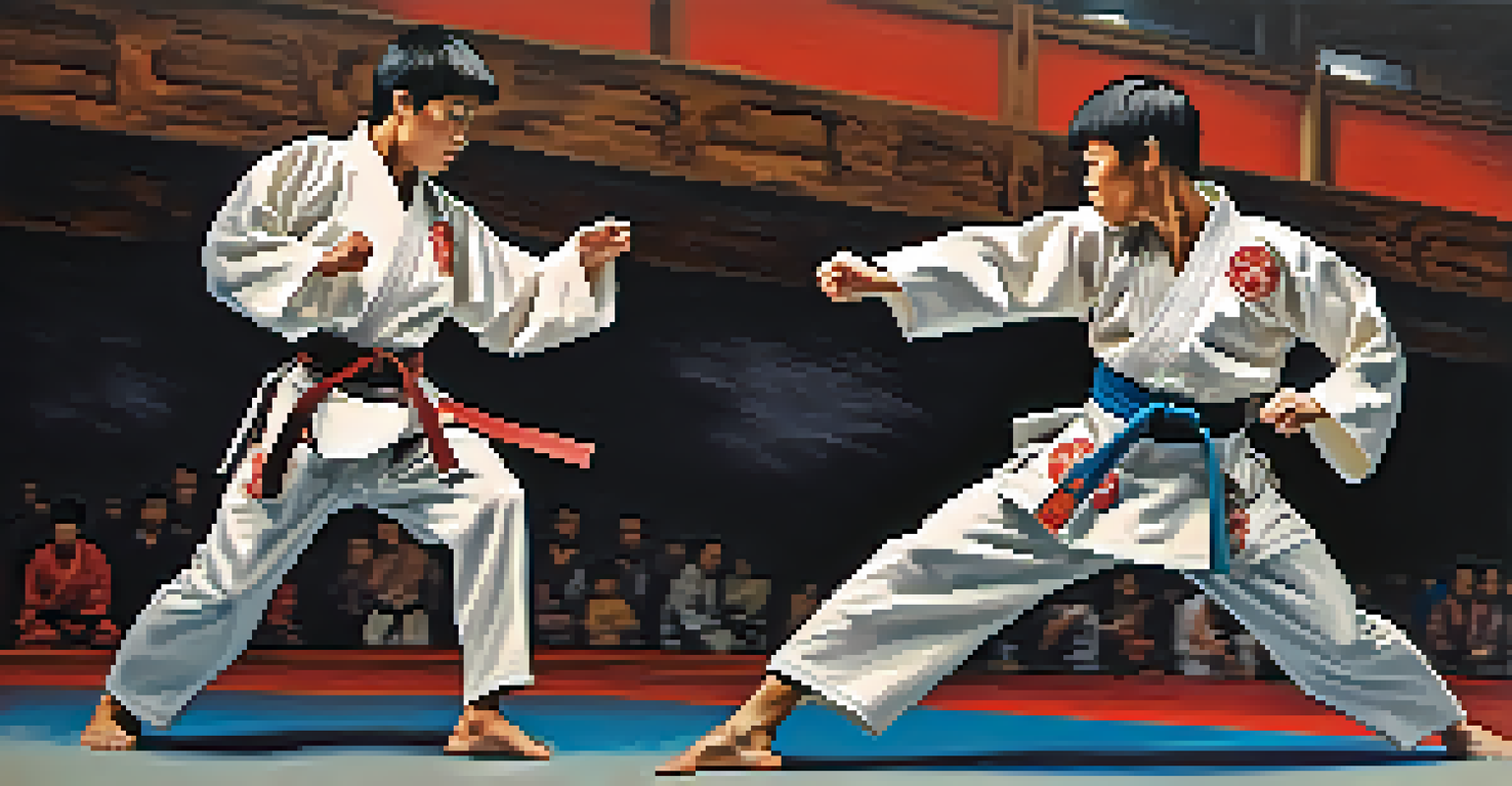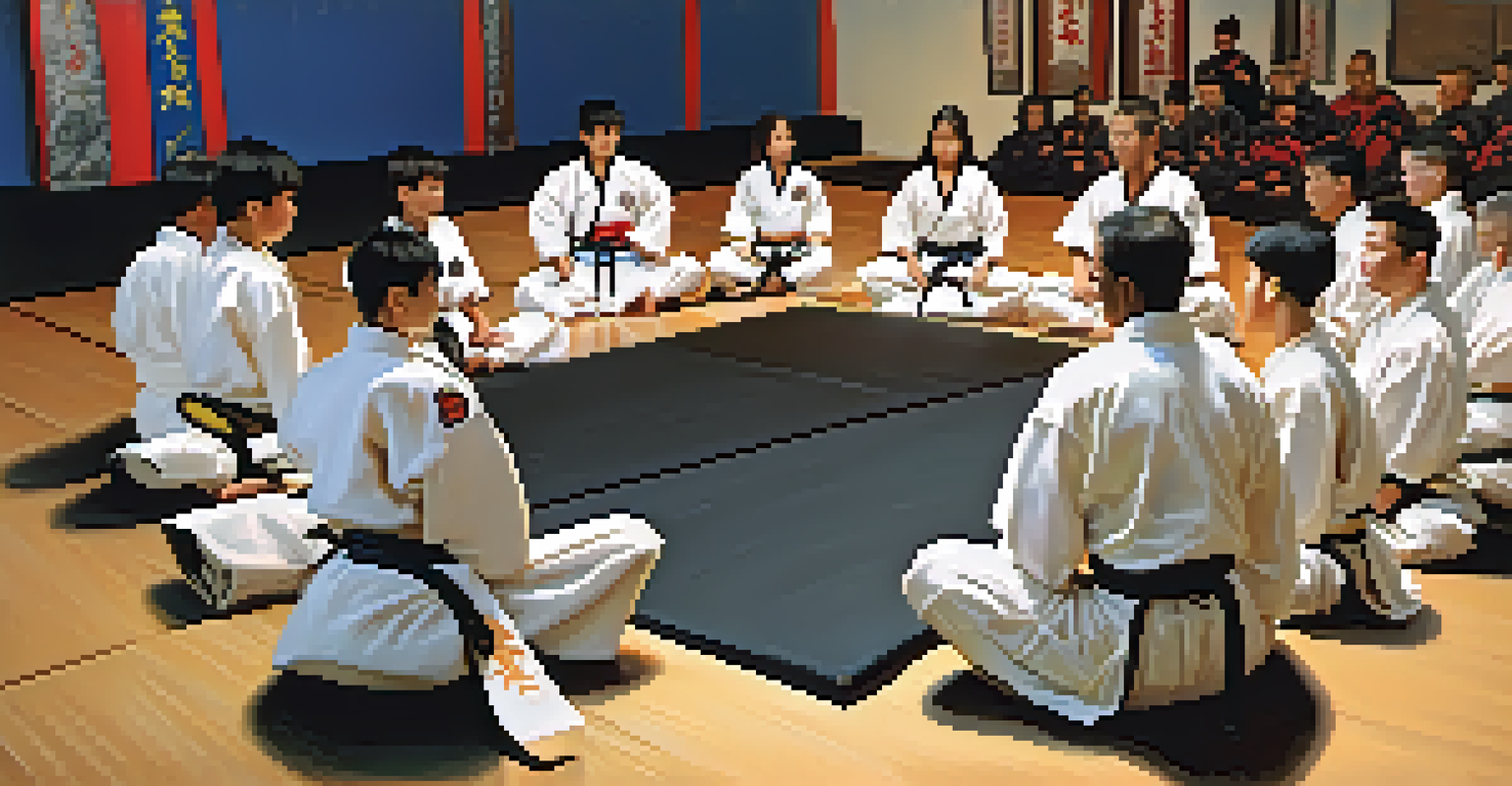Developing Leadership Skills Through Martial Arts Training

Understanding Leadership in Martial Arts
Leadership in martial arts is not just about giving commands; it involves leading by example. Instructors model discipline, respect, and resilience, which are essential traits of effective leaders. This environment fosters a culture where students learn to take initiative and responsibility, mirroring the dynamics of any leadership role.
Leadership is not about being in charge. It is about taking care of those in your charge.
When you practice martial arts, each class teaches you to remain calm under pressure, a skill vital for any leader. The ability to make quick decisions while maintaining composure is developed through sparring and competition. This mirrors real-world situations where leaders must navigate challenges with confidence.
Moreover, martial arts emphasize teamwork and collaboration, as many forms require partners to practice techniques. This interaction nurtures communication skills, essential for any leader, as you learn to convey ideas clearly and listen actively to others.
Discipline: The Cornerstone of Leadership
Discipline is a fundamental aspect of martial arts training, teaching students the importance of consistency and commitment. Just as a martial artist practices their techniques daily, effective leaders must also show up consistently for their teams. This dedication inspires others and builds trust among team members.

Through rigorous training, martial artists learn that progress comes with patience and perseverance. This lesson directly translates to leadership, where long-term goals often require sustained effort and resilience. Leaders who embody discipline can motivate their teams to stay focused and work towards shared objectives.
Leadership Through Example
Martial arts instructors lead by modeling discipline, respect, and resilience, fostering a culture of initiative and responsibility among students.
Additionally, the structured environment of martial arts helps cultivate self-regulation. Leaders who manage their emotions and reactions effectively create a positive atmosphere, fostering collaboration and productivity within their teams.
Building Confidence Through Martial Arts
Confidence is crucial for effective leadership, and martial arts training is an excellent way to develop it. As practitioners progress through belts and mastering techniques, they gain a sense of achievement that reinforces their self-belief. This newfound confidence can be a game-changer in professional settings.
The greatest glory in living lies not in never falling, but in rising every time we fall.
In martial arts, facing opponents and overcoming challenges builds resilience. Each time you step onto the mat, you learn to confront fears and take calculated risks. This experience empowers leaders to tackle difficult situations head-on, fostering a culture of bravery within their teams.
Moreover, the supportive environment in martial arts encourages individuals to step outside their comfort zones. Leaders who embrace vulnerability and encourage their teams to do the same create a more innovative and open workplace.
Emphasizing Respect and Humility
Martial arts training is steeped in respect—towards instructors, peers, and the art itself. This core value translates seamlessly into leadership, where mutual respect is essential for team dynamics. Leaders who embody respect foster a more inclusive environment, where every opinion is valued.
Humility is another vital trait learned through martial arts. Recognizing that there is always room for improvement helps leaders remain grounded and approachable. This mindset encourages continuous learning and growth, both personally and within their teams.
Building Resilience and Confidence
Training in martial arts develops resilience and confidence, empowering leaders to face challenges and inspire their teams.
By practicing respect and humility, leaders create an atmosphere where feedback is welcomed, and collaboration thrives. Such leaders inspire loyalty and commitment from their teams, ultimately driving success.
Enhanced Communication Skills Through Training
Effective communication is a hallmark of strong leadership. In martial arts, practitioners must convey techniques and strategies clearly, both verbally and non-verbally. This constant practice sharpens communication skills that are directly applicable in workplace settings.
Additionally, martial arts emphasizes the importance of active listening. During sparring or training sessions, understanding your partner's movements and intentions is crucial. Leaders who actively listen to their team members can address concerns effectively and cultivate a more engaged workforce.
Finally, the ability to give and receive constructive feedback is a key aspect of martial arts. This skill helps leaders guide their teams towards improvement while also fostering a culture of openness and growth.
Resilience: A Key Leadership Trait
Resilience is one of the most valuable traits a leader can possess, and martial arts training builds this capability. Practitioners face setbacks—whether in mastering a technique or during competition—and learn to bounce back stronger. This ability to recover from challenges is essential for any leader navigating the ups and downs of their role.
Through martial arts, individuals learn to embrace failure as a stepping stone to success. This perspective encourages leaders to view obstacles as opportunities for growth, fostering a positive mindset within their teams. When leaders model resilience, they inspire their teams to adopt a similar attitude.
Effective Communication Skills
Martial arts training sharpens communication skills through clear conveyance of techniques and active listening, essential for strong leadership.
Moreover, the physical and mental challenges faced during training sessions build a robust foundation for dealing with stress. Leaders equipped with resilience can maintain focus and clarity, even in high-pressure situations.
Applying Martial Arts Principles in Leadership Roles
Integrating martial arts principles into leadership roles involves applying the lessons learned during training to everyday situations. For instance, leaders can adopt the discipline and focus developed in martial arts to enhance productivity within their teams. Small changes, such as setting clear goals and maintaining consistency, can lead to significant improvements in performance.
Moreover, the emphasis on respect and teamwork in martial arts can help leaders foster a collaborative culture. By encouraging open communication and valuing diverse perspectives, leaders can create a more dynamic and innovative work environment that mirrors the camaraderie found in martial arts dojos.

Finally, the confidence and resilience gained through martial arts training empower leaders to take bold actions and make decisions that drive progress. By embracing these principles, leaders can transform not only their own approach but also positively impact their teams and organizations.